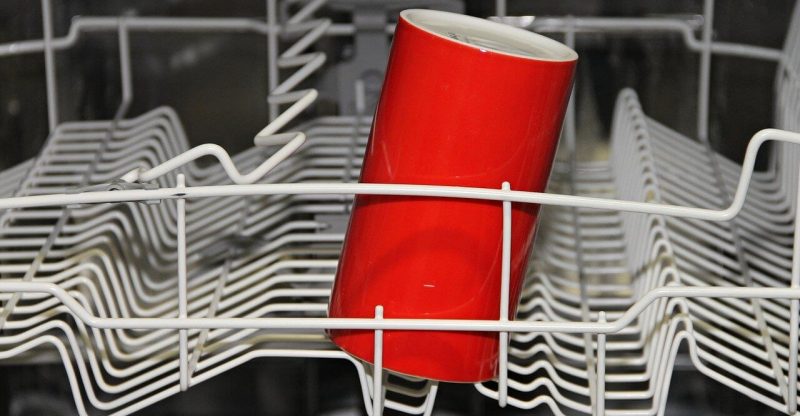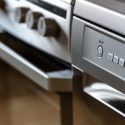How Does A Table Top Dishwasher Work?
A table top dishwasher is just a downsized full size dishwasher. Other than holding fewer dishes and connecting to your kitchen faucet, it works exactly the same way as a typical dishwasher.
Cold water gets in through the inlet hose, gets heated and a rotating arm sprays the hot water onto your dishes. A tablet or pod dissolves in the hot water and helps get the dishes clean.
Dirty water then gets out through the outlet hose.
There are some differences from brand to brand. For instance, some table top dishwashers have a sensor that regulates the amount of water the dishwasher uses based on how dirty the dishes are.
Read on to learn more on how does a table top dishwasher work.
Table Top Dishwasher Setup

The biggest difference between a full size and table top dishwasher is the setup. Unlike full size dishwashers that sit on the floor or under the counter and are plumbed in, a table top dishwasher sits on the counter and doesn’t have to be plumbed.
Instead, you can attach the inlet hose to your kitchen tap using an adaptor. As long as the water from the tap is coming out with the right amount of pressure, it’ll supply the dishwasher with all the water it needs.
As for the drain hose, you can set it up to drain into the sink.
If you want, you can still plumb in a table top dishwasher. This is handy if you don’t want your kitchen faucet inaccessible at any time. In that case, you’ll need to connect the inlet hose to the cold water supply and the drain hose to the waste pipe under the sink.
The biggest advantage of a table top dishwasher is that it takes up less space than a conventional dishwasher. If you don’t have on the floor for a freestanding dishwasher or under-counter space for an integrated model, a table top dishwasher is a great alternative.
Most table top dishwashers are roughly the size of a microwave oven – about 55cm wide and 50cm deep.
Loading A Table Top Dishwasher
The interior layout of a table top dishwasher is very similar to that of a freestanding or integrated dishwasher.
You have flip down tines to hold plates, slots to hang glasses and cups and baskets to hold cutlery.
The main difference between a table top and a full size dishwasher is that there’s just one rack instead of two. Table top dishwashers have between 2 and 8 place settings, compared to the 9-16 place settings of full size machines.
That’s why table top dishwashers work best for individuals, couples or roommates and small households of no more than 5 people.
Programs And Settings
One thing you’ll be glad to know is that table top dishwashers have the same washing programs as full size dishwashers. In fact, some models give you more options.
The usual programs like Eco, normal, rapid and intensive are available on all table top dishwashers. Many models also feature additional programs like glass, pre-rinse and extra-dry. You can also set a delay timer, telling the dishwasher to start cleaning after a number of hours.
So by opting for a table top dishwasher, you are not giving up on the versatility and ease of use that full size dishwashers offer.
What About Efficiency?
Another thing many people worry is that a smaller dishwasher will be more energy inefficient. That’s not the case.
If you look at the EU Energy Class of most table top dishwashers from companies like Bosch and Cookology, it’s similar to that of most integrated and full size models. They have an A+ rating.
As long as you stick to the ECO program most of the time and make sure you fill the dishwasher to capacity every time you load it, you won’t use more electricity and water than you would have with a normal dishwasher.
It’s also important that you get a dishwasher with the right capacity for your household. If you have to run the dishwasher 3 or 4 times a day because it is too small, you’ll be wasting energy and water.
At a certain household size (usually more than 5 people), you are better off getting a full size dishwasher.
For smaller families, a dishwasher with 6 or 8 place settings is adequate. For homes and apartments with 1-2 people, 2-6 place settings will do.





